Not long ago, I found myself looking up this hill.
 I climbed the steps, since I still have the energy for that kind of thing sometimes, and at the top of the hill is this vista.
I climbed the steps, since I still have the energy for that kind of thing sometimes, and at the top of the hill is this vista.
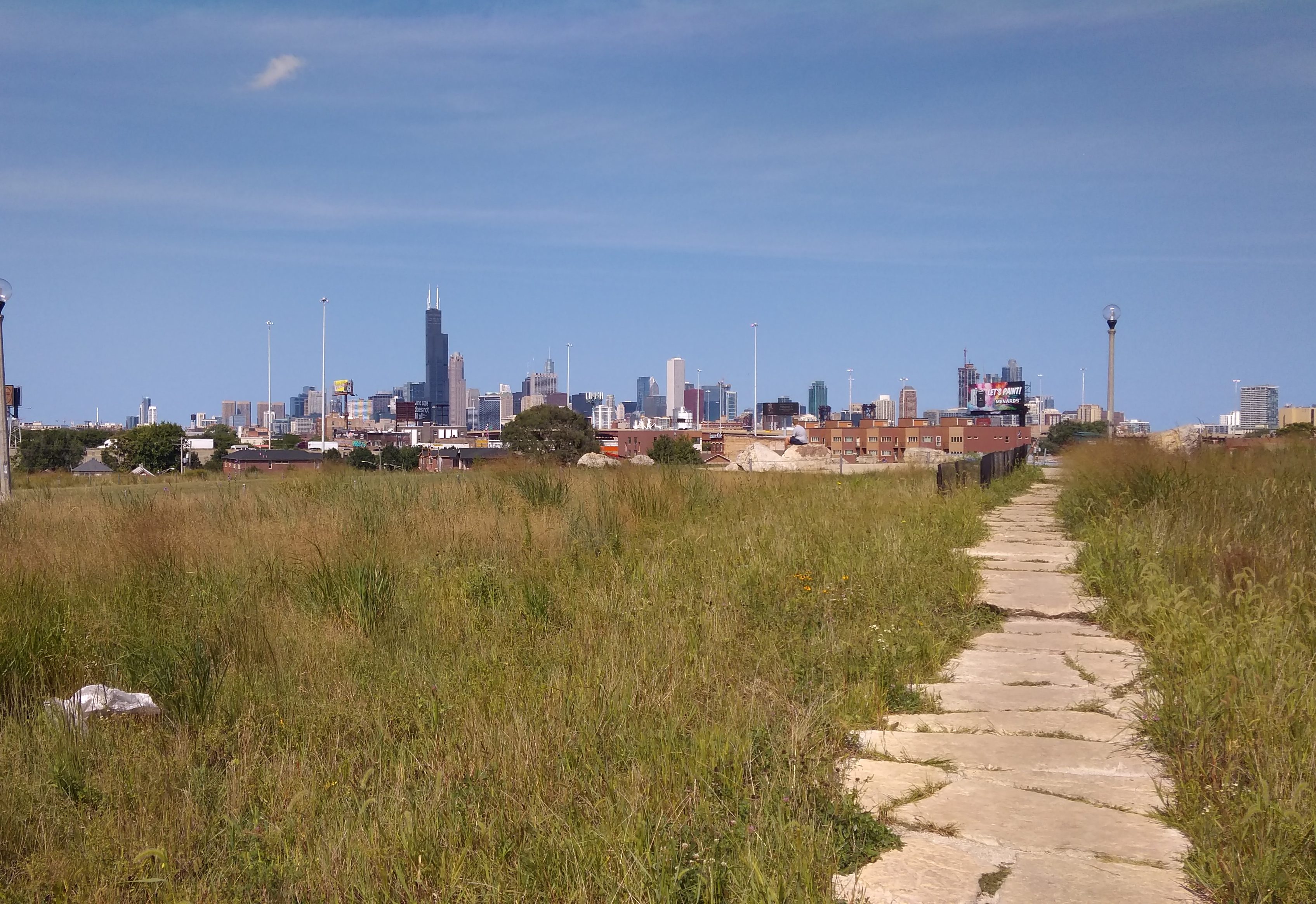 That only goes to show how easy it is for an image to mislead. How would someone merely looking at the first image know that the hilltop has a fine view of downtown Chicago from the southwest?
That only goes to show how easy it is for an image to mislead. How would someone merely looking at the first image know that the hilltop has a fine view of downtown Chicago from the southwest?
Anyway, I was at the Henry C. Palmisano Nature Park, though I have a good source that tells me its informal name is Mount Bridgeport, after the surrounding neighborhood, and it rises 33 feet above street level.
“In the late 1830s, the land was purchased by the Illinois Stone and Lime Company which began quarry operations,” says the Chicago Park District. “Within a short time, one of its partners, Marcus Cicero Stearns, took over and renamed the quarry. Stearns was an early Chicago settler who got his start by opening a supply store for workmen who blasted out rock to build the Illinois and Michigan Canal.
“Even after Stearns died in 1890, the quarry continued operating under his name until 1970. For the next few decades, the site was used as a landfill for clean construction debris. After the dumping ended, the idea of transforming the site into a new park emerged.”
The transformation took some time, but a park finally opened on the site in 2009, named for a man who died in 2006. It’s more than a grassy hill with a view, though that’s a standout feature in flatland like Illinois.
The path goes off in other directions.
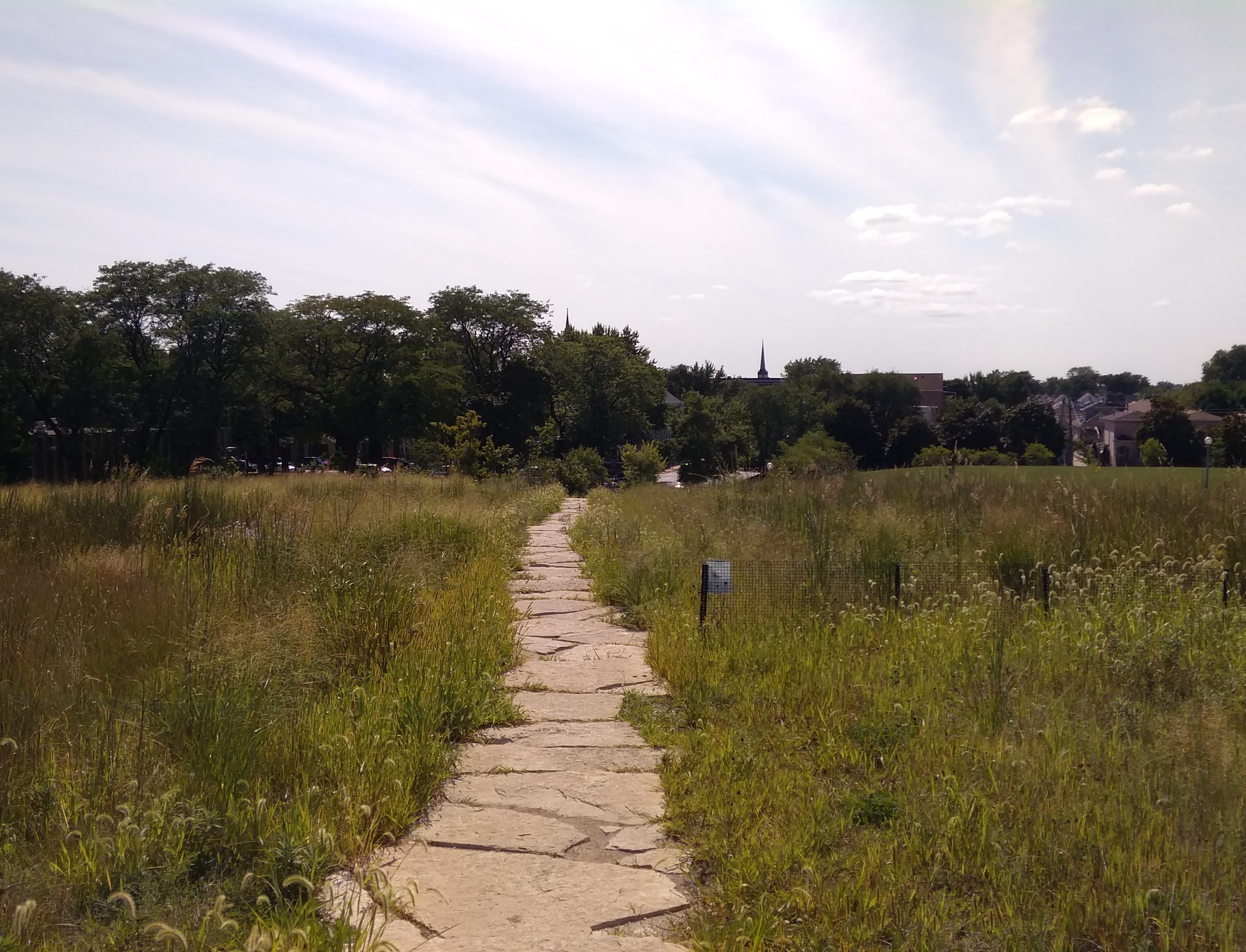 Other parts of the city are visible from the hill.
Other parts of the city are visible from the hill.
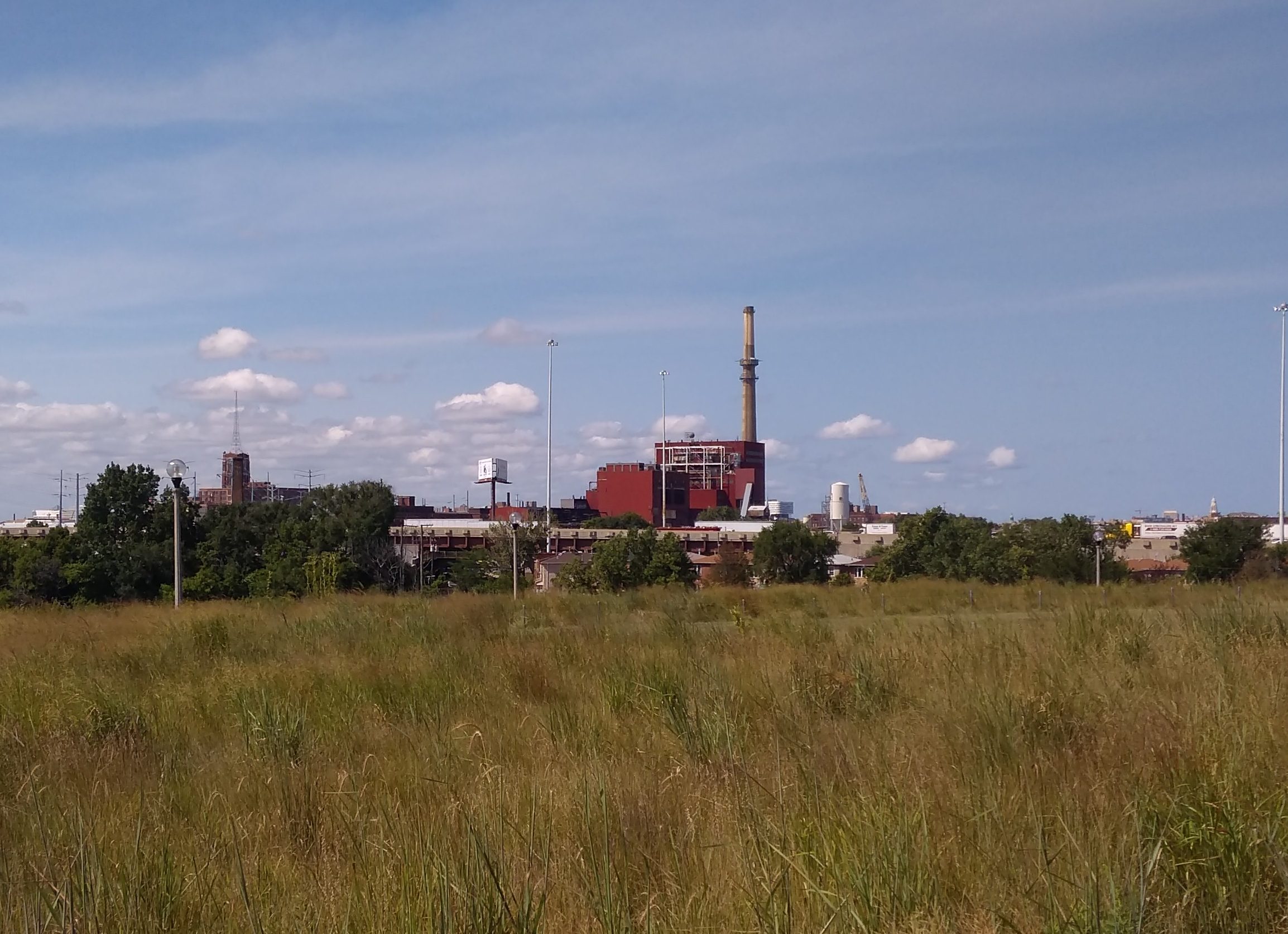 Part of the old quarry hole is now a pond, available for catch-and-release fishing, according to a nearby sign.
Part of the old quarry hole is now a pond, available for catch-and-release fishing, according to a nearby sign.
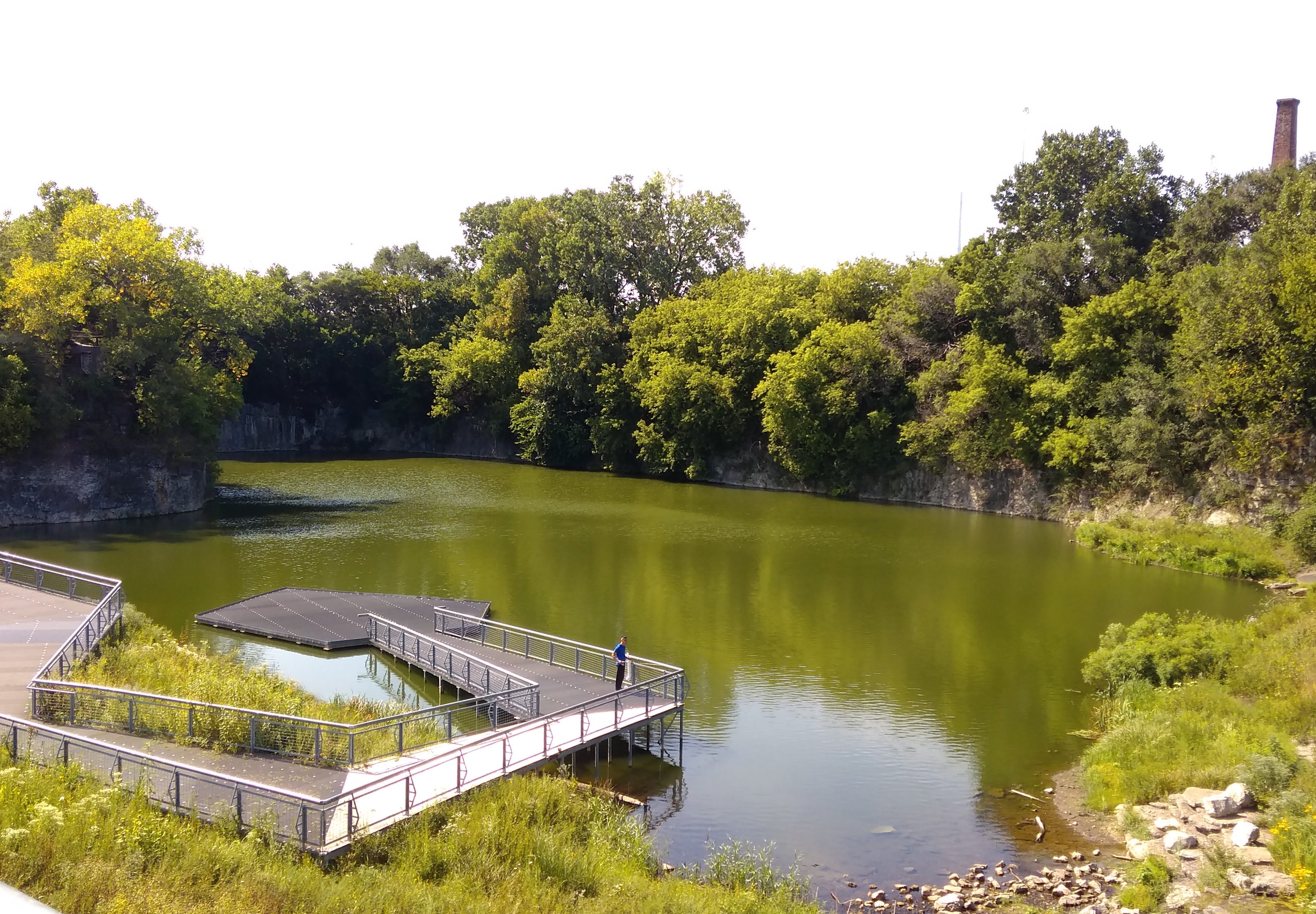 This may be the closest waterfall to downtown Chicago. Modest, but nice to look at. The stream goes to the quarry-pond.
This may be the closest waterfall to downtown Chicago. Modest, but nice to look at. The stream goes to the quarry-pond.
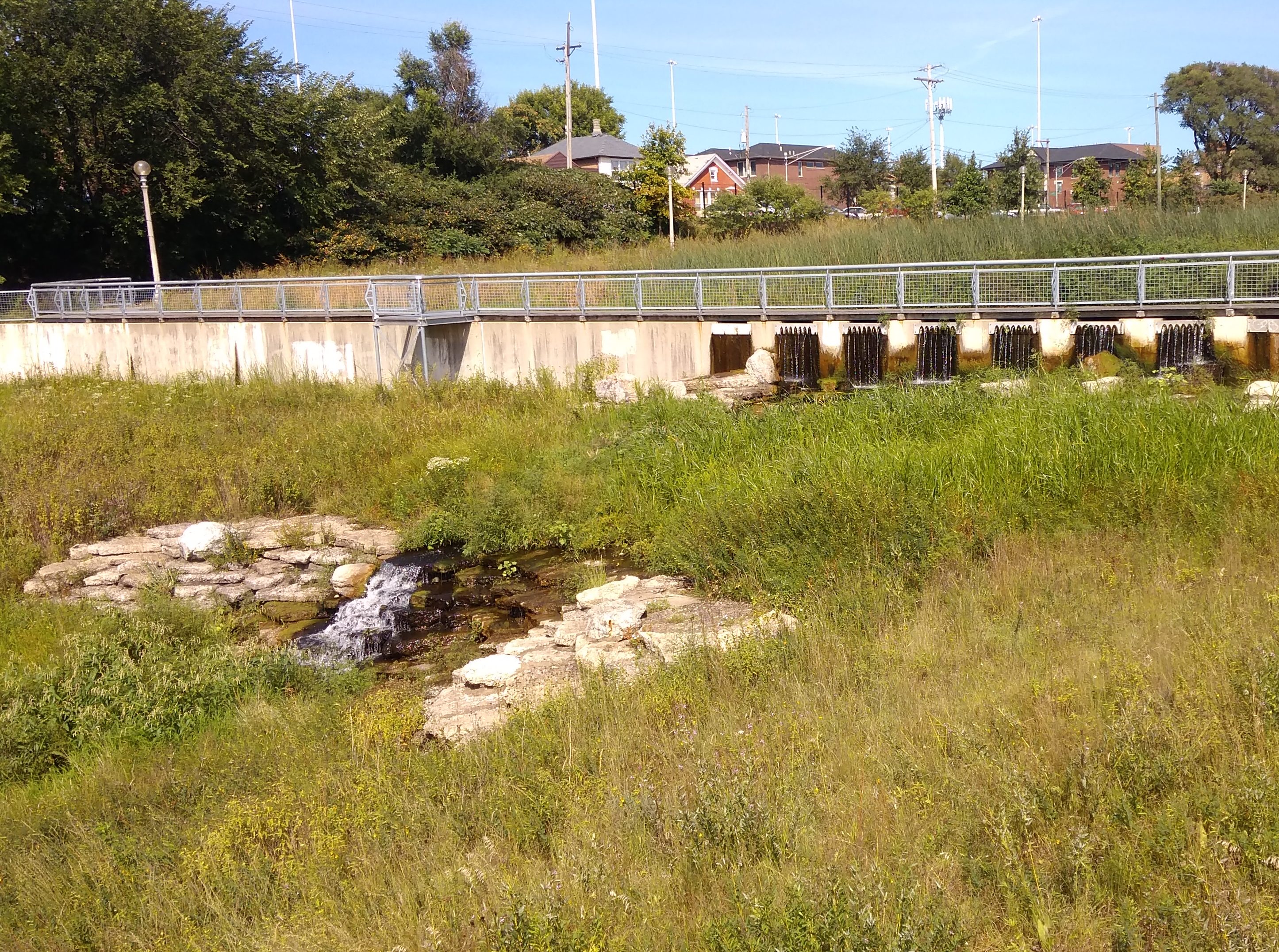 “This is a dynamic park, with a fishing pond, interpretive wetlands, preserved quarry walls, trails, an athletic field, a running track, and a hill that offers dramatic views,” the Park District notes. “Over 1.7 miles of paths, including recycled timber boardwalks, concrete walks, a crushed stone running path, and metal grating walkways traverse the park.”
“This is a dynamic park, with a fishing pond, interpretive wetlands, preserved quarry walls, trails, an athletic field, a running track, and a hill that offers dramatic views,” the Park District notes. “Over 1.7 miles of paths, including recycled timber boardwalks, concrete walks, a crushed stone running path, and metal grating walkways traverse the park.”
The Stevenson Expressway is visible, and very much audible, from the park. How many of the many drivers on that highway have any notion of such an excellent park nearby?
I never did for some years. “What’s that park?” I wondered some time ago while looking at a map of Chicago, making a mental note to visit when I would be nearby, which happened to be just before Labor Day. Being a map enthusiast has its rewards.